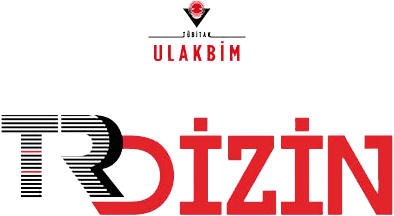
Bu eser Creative Commons Alıntı-GayriTicari-Türetilemez 4.0 Uluslararası Lisansı ile lisanslanmıştır.













Protective measures for healthcare professionals by the COVID-19 health belief model
Seval ÇALIŞKAN PALA1, Selma METİNTAŞ2, Muhammed Fatih ONSUZ2, Veli Görkem PALA3, Ali KILINÇ2, Ece Elif ÖCAL41Eskişehir İl Sağlık Mdürülüğü, Eskişehir, Türkiye2Eskişehir Osmangazi University, Medical Faculty, Department Of Public Health, Eskişehir, Turkey
3Eskişehir Provincial Health Directorate 112 Ambulance Service, Eskişehir, Turkey
4Ardahan Provincial Health Directorate, Ardahan, Turkey
INTRODUCTION: The Health Belief Model (HBM) is an effective instrument in explaining and measuring behaviors protecting and improving the health. It was aimed to evaluate the compliance of healthcare professionals (HCP), who are on the front-line in the combat with COVID-19 pandemic, with protective measures according to the HBM.
METHODS: The present study is a cross-sectional study, which was carried out in the period in the first wave of epidemic in a province in the central Anatolian region of Turkey, with 316 ambulance medics serving. Compliance with protective measures was evaluated with an online form. The questionnaire consisted of questions related to the sociodemographic characteristics of the individuals (age, gender, marital status, etc.), variables related to health beliefs (chronic diseases, smoking and alcohol addiction, COVID-testing, etc.), the protective measures they applied during the COVID-19 process (staying at home, washing hands, wearing masks, etc.), and the COVID-19 HBM Scale questions created by the researchers through a literature review.
RESULTS: In the study group, 63.0% of participants were female and the ages ranged from 20-60. The mean age ±Standard Deviation (SD) was calculated to be 32±6.9 years. After the analyses of the COVID-19 HBM, which consists of four sub-dimensions (perceived threat, perceived barriers, perceived benefit, cues to action, and self-efficacy) and includes 20 items, the scale explained 57.8% of the total variance. Factor loads of the items ranged from 0.44 to 0.89, and their total correlations ranged between 0.22 and 0.61. The Cronbach’s alpha value was found to be 0.85. Overall, 71.8% of the participants were found to implement all the protective measures. In the study group, among those implementing all the protective measures, the scores of perceived threat (p=0.001) and benefit (p=0.006) sub-dimensions and the total score (p=0.001) were found to be higher. The COVID-19 HBM scale score was found to be higher in those who were diagnosed with COVID-19, those who had a test, those who had an increased level of anxiety, and those who thought the pandemic would last longer than a year.
DISCUSSION AND CONCLUSION: The COVID-HBM Scale developed in the study is a valid and reliable. According to the health belief model among healthcare professionals, perceiving COVID-19 as a threat and believing in the benefits of preventive measures is important for better control of the disease.
Sağlık çalışanlarında COVID-19 sağlık inanç modeline göre koruyucu önlemler
Seval ÇALIŞKAN PALA1, Selma METİNTAŞ2, Muhammed Fatih ONSUZ2, Veli Görkem PALA3, Ali KILINÇ2, Ece Elif ÖCAL41Eskişehir Provincial Health Directorate, Eskişehir, Turkey2Eskişehir Osmangazi Üniversitesi, Tıp Fakültesi, Halk Sağlığı Anabilim Dalı, Eskişehir, Türkiye
3Eskişehir İl Sağlık Müdürlüğü 112 Acil Ambulans Hizmetleri, Eskişehir, Türkiye
4Ardahan İl Sağlık Müdürlüğü, Ardahan, Türkiye
GİRİŞ ve AMAÇ: Sağlık İnanç Modeli (SİM), sağlığı koruyan ve geliştiren davranışları açıklamada ve ölçmede başarılı, etkin bir rehberdir. Çalışmada, COVID-19 pandemisiyle mücadelede ön safta bulunan sağlık çalışanlarının koruyucu önlemlere uyumunun SİM’e göre değerlendirilmesi amaçlandı.
YÖNTEM ve GEREÇLER: Çalışma COVID-19 pandemisinin 12-24. haftasında Türkiye’nin Orta Anadolu bölgesinde bir ilde ön safta yer alan ambulansta hizmet veren 316 sağlık çalışanında gerçekleştirilen kesitsel tipte bir araştırmadır. Koruyucu önlemlere uyum online form ile değerlendirildi. Anket formu, kişilerin sosyodemografik özellikleri (yaş, cinsiyet, medeni durum, vb.), sağlık inançları ile ilişkili değişkenleri (kronik hastalıklar, sigara ve alkol bağımlılığı, COVID-testi yaptırma vb.) COVID-19 sürecinde uyguladıkları koruyucu önlemler (evde kalma, el yıkama, maske takma vb.) ile ilişkili sorular ve araştırmacılar tarafından literatür taraması ile oluşturulan COVID-19 SİM Ölçeği sorularından oluştu.
BULGULAR: Çalışma grubunun %63.0’ü kadın ve yaşları 20-60 arasında değişmekte olup ortalaması ±Standart Sapma 32±6.9 yıl idi. COVID-19 SİM geçerlik ve güvenirlik analizleri sonrasında dört alt alandan (Algılanan tehdit, Engel algısı, Yarar algısı, Eyleme geçiriciler ve Öz-yeterlilik) oluşan 20 madde içeren ölçek, toplam varyansın %57.8’ini açıkladı. Maddelerin faktör yükleri 0.44-0.89, toplam korelasyonları 0.22-0.61 arasında değişmekteydi. Ölçek Cronbach alfa değeri 0.85 bulundu. Çalışma grubundaki bireylerin %71.8’i tüm koruyucu önlemleri uygulamaktaydı. Çalışma grubunda tüm koruyucu önlemleri alanlarda algılanan tehdit (p=0.001) ve yarar (p=0.006) alt alanlarından ve ölçek toplamından (p=0.001) alınan puan daha yüksek bulundu. COVID-SİM ölçek puanı bir yakınına COVID-19 teşhisi konulanlarda, test yaptıranlarda, kaygı düzeyi artanlarda ve pandeminin bir yıldan uzun süreceğini düşünenlerde daha yüksek tespit edildi.
TARTIŞMA ve SONUÇ: Çalışmada geliştirilen COVID-SİM ölçeği geçerli ve güvenilir bir ölçektir. Sağlık çalışanları arasında sağlık inanç modeline gore COVID-19’u bir tehdit olarak algılamak ve önleyici tedbirlerin yararına inanmak hastalığın daha iyi kontrol altına alınması için önemlidir.
Manuscript Language: English
(652 downloaded)


